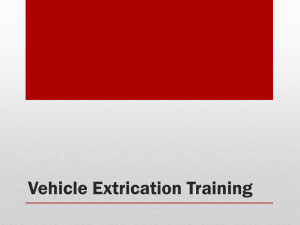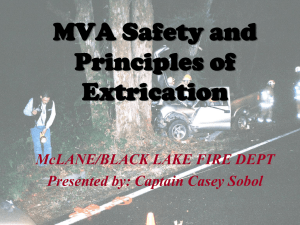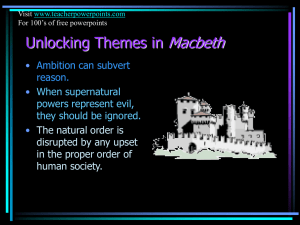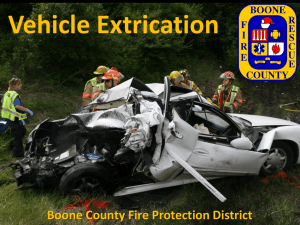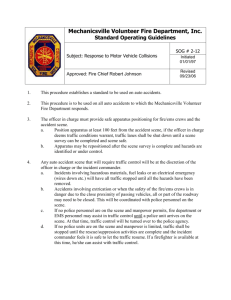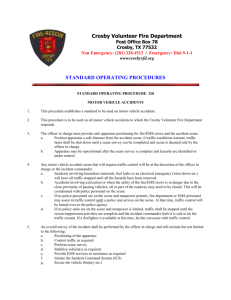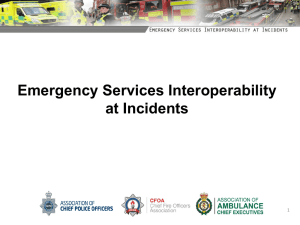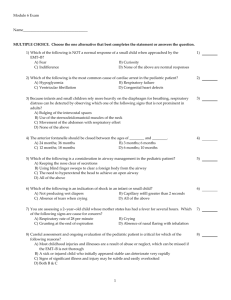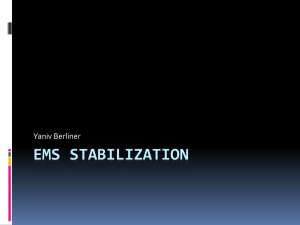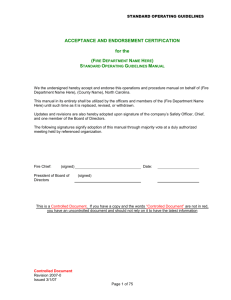INCIDENT COMMAND - Advanced Extrication
advertisement
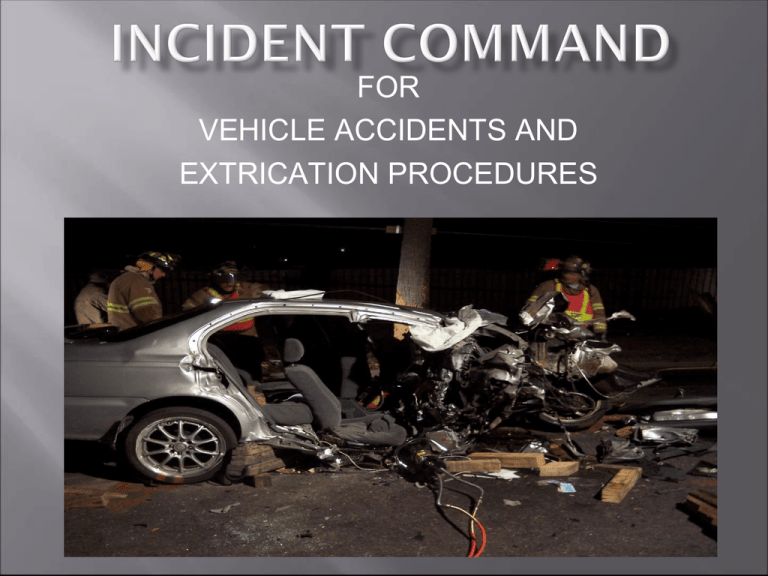
FOR VEHICLE ACCIDENTS AND EXTRICATION PROCEDURES The basic principal for commanding a vehicle accident remains the same as any incident. There are, however, many diverse and different type tasks being coordinated which differ from the fire scene which need constant evaluation. Safety, as always, remains the number one priority. When training for these types of incidents, it is sometimes helpful to use a basic benchmark type system to assist. The use of this benchmark system during training will allow the FF to be more familiar with the step by step process of commanding this type of incident, and forces the IC to prioritize. ESTABLISH COMMAND SCENE SURVEY (INNER AND OUTER) HAZARD IDENTIFICATION / MITIGATION PATIENT(S) LOCATED PATIENT CARE STABILIZATION PLAN OF ACTION RESOURCE AVAILABILITY EXECUTE PLAN, PRIORITIZE TASKS Commanding an incident which requires such technical and precise procedures to accomplish the goals is unique in many forms. The stress level is elevated, and the close proximity to the incident adds to confusion. A sense of Speed, at times, may outweigh the necessary and actual priority of safe, effective task performance. Time is of the essence, however, time can be reduced by confident, proper, and safe technique. A distinct understanding of the action – reaction law is necessary for both the IC and the Technician. Each cut that is made or metal relocated will have a reaction to the rest of the vehicle which, if not controlled by cribbing and on-going stabilization, can have detrimental consequences to both the rescuer and patient(s). Commanding the extrication scene requires a broad spectrum of familiarity with many different aspects of scene management, extrication techniques, vehicle construction, the stabilization process, etc. The Incident Commander does not have to be an expert in all of these fields, but needs to know his or her resources to work with, and should be above average with their own competency level of the extrication process. The Incident Commander must be available to options discovered during the extrication process or rescuer input. They cannot, however, lose command and control. When the loss of control becomes apparent to those on scene, we invite freelancing and other hazardous action to take place. A firm, confident stature is necessary and will ultimately instill confidence to the entire rescue crew. THE ATTITUDE OF THE INCIDENT COMMANDER WILL DICTATE SCENE PERFORMANCE! As the first arriving unit, there are three simple yet effective things to remember which can assist your initial actions. 1. WHAT HAVE I GOT. 2. WHAT AM I DOING. 3. WHAT DO I NEED. These 3 simple phrases can help the IC begin their command decisions and priorities You can think of this much like a UCAN report. What are your conditions? What actions are you taking? What are your needs? Establish Command Scene Survey Traffic Management Occupant(s) Located Hazard ID / Mitigate Stabilization Patient Access Rescuer Access Patient Care On-Going Stabilization Resource Availability Personnel abilities Patient Path of Egress Plan of Action Alternate Plan of Action Glass Management Extrication Procedures Patient Removal Scene Breakdown Evaluation of Performance By simply establishing COMMAND, you are building the foundation by which all other activities are being built. It is the starting point for the accountability system. All other responding units are aware of who is making the decisions, and are expecting to hear what their task assignment will be. ESTABLISH IT, CONTROL IT, MAINTAIN IT An essential part of your command. Do not confuse your initial scene report with your complete scene survey. A complete scene survey is more detailed and takes more time. Locate Hazards, patients, initiate patient care. All information gathered may not necessarily be communicated to other units. You begin to formulate a plan of action, and establish your inner and outer perimeters. Know your resources available



